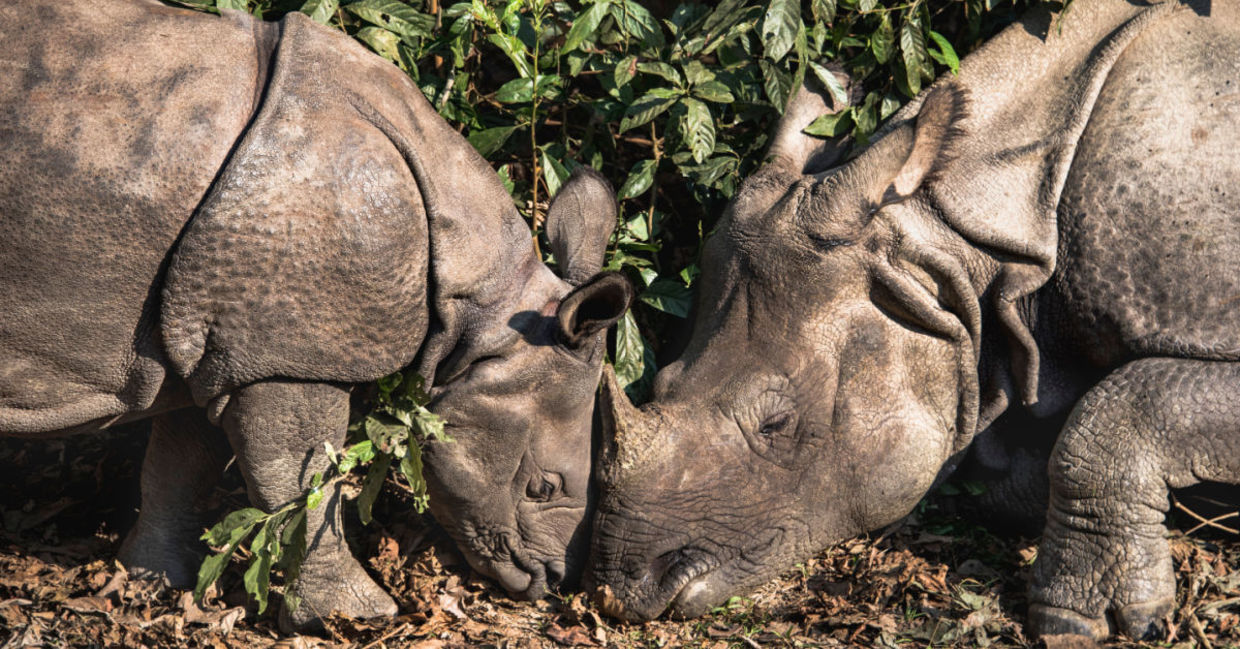
(Mesa Studios / Shutterstock.com)
The rhino census is out, bearing good news for the greater one-horned rhino! In September, 2022, the International Rhino Foundation (IRF) documented in a report that there is a baby boom in this population, representing an increase of a whopping 167 percent.
According to the report, there are a total of 4,014 greater one-horned rhinos living in India, Nepal, and Bhutan. Although this is positive news, their IUCN (International Union for Conservation of Nature) status still remains vulnerable.
In India alone, the home to 70 percent of the world’s greater one-horned rhinos, there was an increase of 274 rhinos since the last biannual census, according to the organization Rhino Review.
Increasing protected parklands for rhinos
An important reason for this baby boom is the fact Assam, India, has enlarged Kaziringo National Park, home to the world’s largest one-horned rhino population. The park went from 430 square kilometers to 1,040 square kilometers. This gives more breeding area for the rhinos, and they are closed to visitors during breeding season.
Another issue that is being addressed is grassland restoration, according to East Mojo. Invasive species have taken over the grassland, reducing food availability for the rhinos.
In Nepal, their 2021 census showed an increase of 107 greater one-horned rhinos from 2015, reporting a population of 752. During the pandemic, when there were fewer visitors to the Nepalese parks, the rhinos were left alone to flourish, reported CNN.
Reducing poaching
India and Nepal are also protecting the rhinos by enforcing wildlife crime laws, according to Rhino Review. To reduce rhino death by poaching, the IRF donates vehicles and equipment, plus education including guard training and crime investigation.
The IRF data for other rhino species is not as promising, although the greater one-horned rhino numbers are encouraging for future conservation. According to the report, there is a decline in Sumatran rhinos, Africa’s white rhinos, while the Javan rhino population is stable and threatened by loss of habitat.
The State of the Rhino report offers hope for these other species. Given that greater one-horned rhinos were once close to extinction, with fewer than 100 living in the world, their recovery is incredible. This demonstrates that there are solutions when organizations and people work together. Let us hope that this successful rhino baby boom will affect other endangered wildlife species around the globe.
YOU MIGHT ALSO LIKE:
11 Fun Facts About Animal Groups That Will Make You Smile
This Country Cherished its Cuddly Koalas!
Test Your Knowledge of Animals We Thought Extinct But Weren’t (Quiz)







